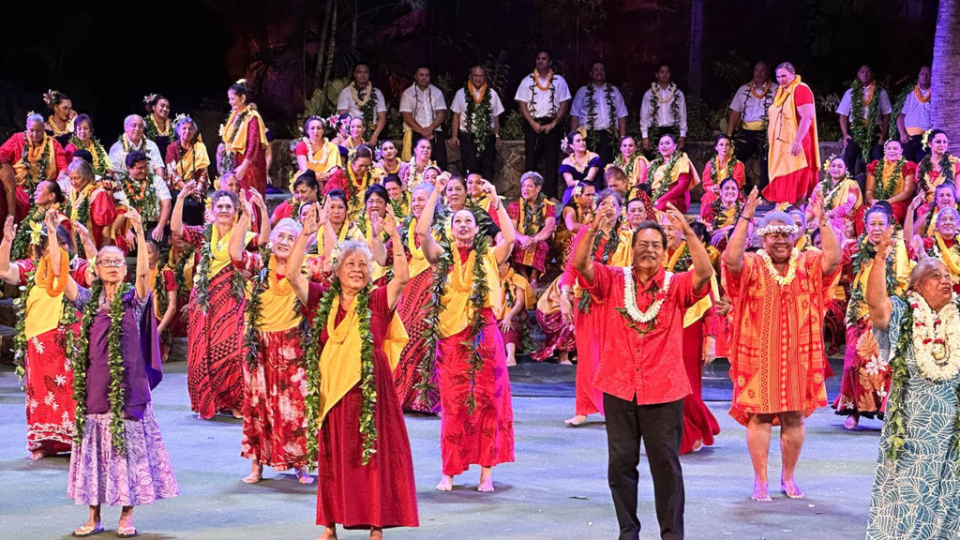
PCC-Anniversary
From left, Aunty Sunday Mariteragi, the Polynesian Cultural Center’s first hula alaka’i (leader); Michelle Wood-Camit (Aunty Sally’s daughter); and Keith Awai, retired from the Center after 40-plus years participate in the center’s 60th anniversary celebration, held October 7–12, 2023. Photo by Mike Foley, courtesy of Church News.Copyright 2023 Deseret News Publishing Company.This story appears here courtesy of TheChurchNews.com. It is not for use by other media.
By Mike Foley, Church News
The Polynesian Cultural Center has not only been one of Hawaii’s most popular visitor attractions, but many thousands of former employees and senior missionaries also know a secret: It’s an enriching place to work and serve, where they often get more out of the experience than visitors.
That’s why several thousand alumni return here each decade, most recently from October 7 to October 12, to celebrate the center’s 60th anniversary.
President Hugh B. Brown, then First Counselor in the First Presidency, dedicated the center — primarily built by labor missionaries, including some from the South Pacific — on October 12, 1963. He cut a traditional lei, signifying the center’s opening. Te Aroha Nui o Te Iwi Maori, a group of almost 200 volunteers from New Zealand, many of them also former labor missionaries in their islands, sang majestically during the program. They came early to help put finishing touches on the center, perform in the new Maori Village, and double the Laie-based cast of the center’s very first night show.
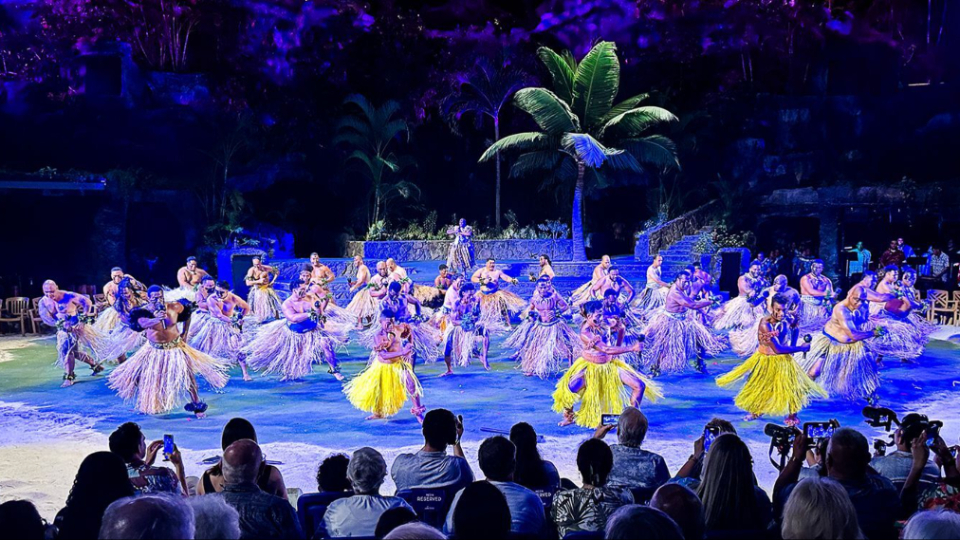
PCC-Anniversary
The Fijian section performs another type of war club dance during the Polynesian Cultural Center’s 60th anniversary celebration, held October 7–12, 2023. Photo by Mike Foley, courtesy of Church News.Copyright 2023 Deseret News Publishing Company.The Devotional
For the 60th anniversary, current center leaders put together a mix of spiritual, cultural and social activities, starting with a devotional on October 8 in the BYU–Hawaii Cannon Activities Center. Three exceptional choirs provided music: Kahuku Third Ward Tongan choir, an alumni choir from Laie, and a virtual alumni choir from around the world.
Polynesian Culture Center president and CEO P. Alfred Grace thanked all for coming and expressed gratitude the alumni were a part of making the prophetic vision of BYU–Hawaii come true. Next, Fraser Bullock, chairman of the center’s board of directors, said, “As I look at you, I had this spiritual impression from our Father that He and His Son are so pleased with the work you have done over the decades.”
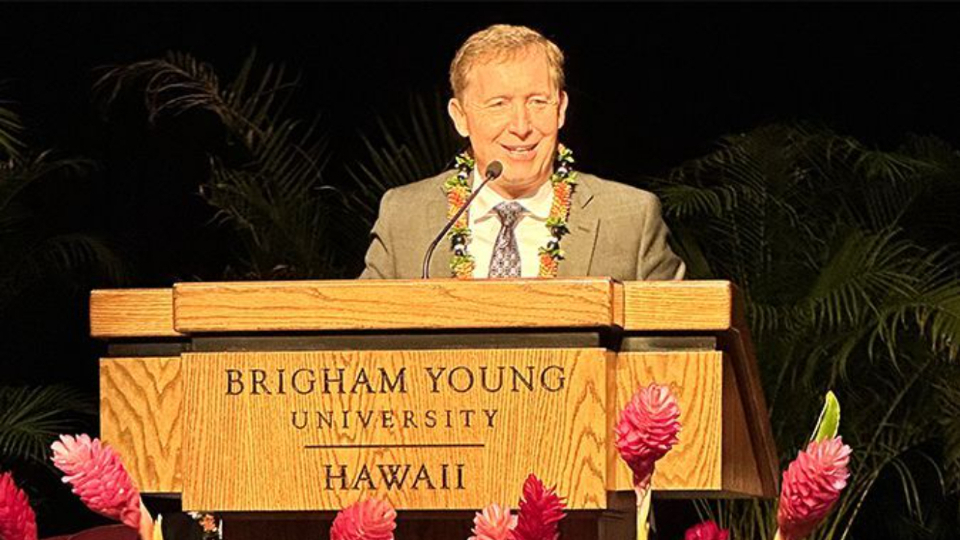
PCC-Anniversary
Bishop L. Todd Budge, Second Counselor in the Presiding Bishopric, delivers the keynote address at the Polynesian Cultural Center’s 60th anniversary devotional in the BYU–Hawaii Cannon Activities Center on October 8, 2023. Photo by Mike Foley, courtesy of Church News.Copyright 2023 Deseret News Publishing Company.Keynote speaker Bishop L. Todd Budge, Second Counselor in the Presiding Bishopric, reminded the devotional crowd that at the center’s 40th anniversary in 2003, President Gordon B. Hinckley said of Laie, “This place is unique in all the world,” referring to the “triad” of the Laie Hawaii Temple, BYU–Hawaii, and the Polynesian Cultural Center.
Referring to an earlier speaker, Bishop Budge added the “three entities ... are places where one can feel and see the light of Jesus Christ and the peace and joy that emulates from them.
“You’re unique in ways that really matter. ... The PCC and BYU–Hawaii are certainly working together in the exact ways the Lord and His prophets intended.”
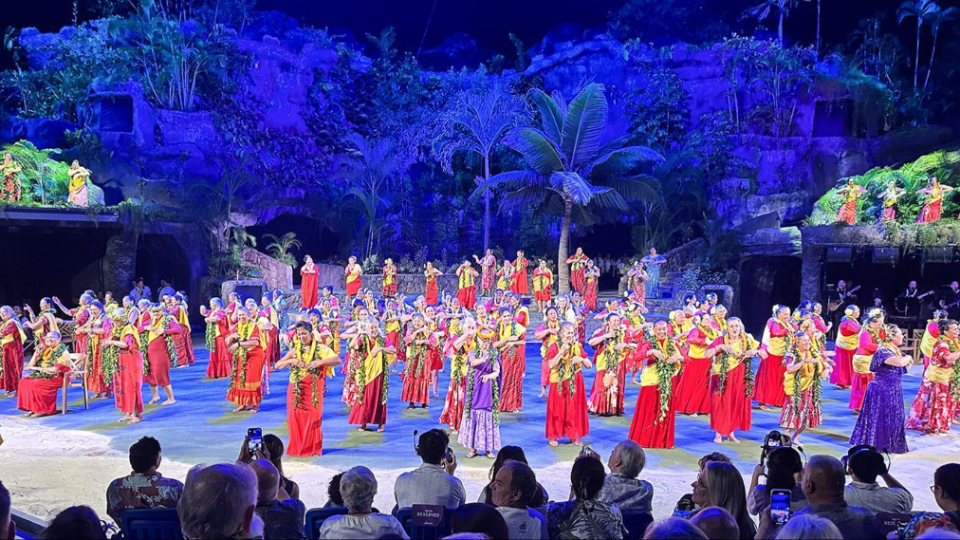
PCC-Anniversary
The women alumni, led by Aunty Sunday Mariteragi — niece of the Polynesian Cultural Center’s original kumu or hula teacher, and an original dancer in 1963, in the purple mu’umu’u — dance a hula during the center’s 60th anniversary celebration, held October 7–12, 2023. Photo by Mike Foley, courtesy of Church News.Copyright 2023 Deseret News Publishing Company.Capturing the Heart
But perhaps a final-morning lecture in the center’s Hawaiian Journey Theater captured the heart of the reunion. Former BYU–H President Eric B. Shumway — also a former missionary and temple president in Tonga, and at one time an interim president of the PCC — shared inspirational moments in the center’s history and examples of its close ties with BYU–Hawaii. For example, he once described the two Church institutions as being “joined at the heart.”
President Shumway pointed out the three current “triad” presidents are Polynesian: Grace, a Maori, at the center; Keoni Kauwe III, a Hawaiian, at BYU–Hawaii; and Finau Hafoka, a Tongan, at the temple (as is Eric Beaver, a Samoan/Hawaiian, president and CEO of Hawaii Reserves Inc., which manages non-ecclesiastical Church-affiliated property in Laie.)
“As we celebrate this momentous 60th anniversary of the PCC, its past, present and future, there’s one figure that towers mightily over every decision, every event, every accomplishment of both the [BYU–Hawaii] campus and PCC. That person is undeniably President David O. McKay.” President Shumway spoke of President McKay’s “vision, prophetic authority, his courage and his absolute assurance and Heavenly Father’s will” to carry out founding the university and center.
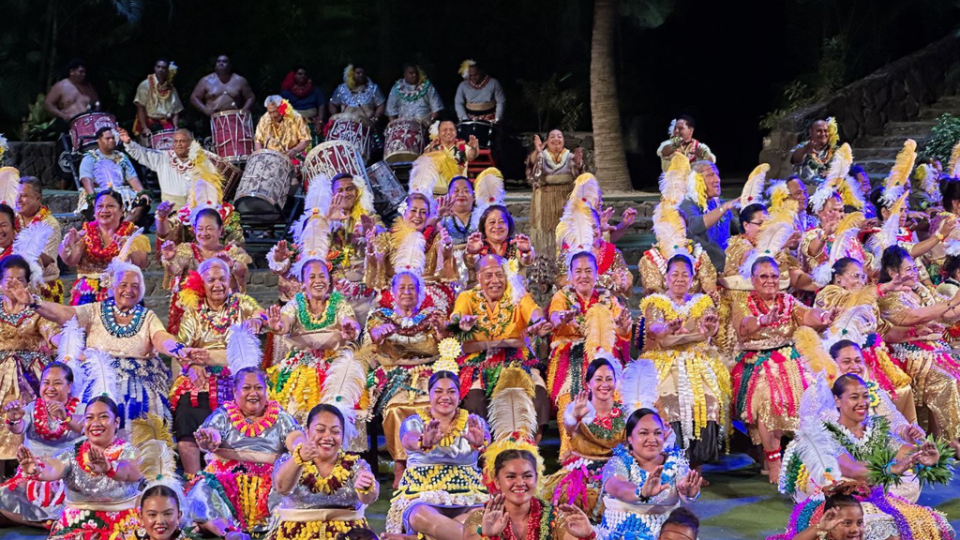
PCC-Anniversary
Tongan alumni, plus a few young children, dance the mā’ulu’ulu — a coordinated motion sitting dance done to the rhythm of the drumming in the background during their night show section — during the Polynesian Cultural Center’s 60th anniversary celebration, held October 7–12, 2023. Photo by Mike Foley, courtesy of Church News.Copyright 2023 Deseret News Publishing Company.Indeed, President Shumway compared President McKay’s dedication for the Church College of Hawaii in 1955, where he stood “in the middle of an open cane field, no buildings, no faculty, no students, and yet declared what the school was going to be and do was, in my judgment, a modern parting of the Red Sea.”
He continued: President McKay foresaw Laie would “become a missionary factor in influencing ... millions of people who will come to know what this town and its significance are.”
“This transcendent prophetic utterance and its subsequent and ongoing fulfillment should burn in the hearts of every person connected with BYU–Hawaii, PCC, the temple and the local Saints of Laie and the surrounding area.”
President Shumway also said of his brief interim term at the center, “A student’s work was not just a way to pay for his or her education. ... It is a central component of their education. I realized that a PCC supervisor was important like unto a BYU–Hawaii faculty member in his students’ overall growth into a competent, confident contributor in the world of work.”
Since 1955, thousands of students from over 70 countries have attended BYU–Hawaii. Since 1963, over 40 million visitors have experienced the Polynesian Cultural Center, and many CCH/BYUH students have worked there.
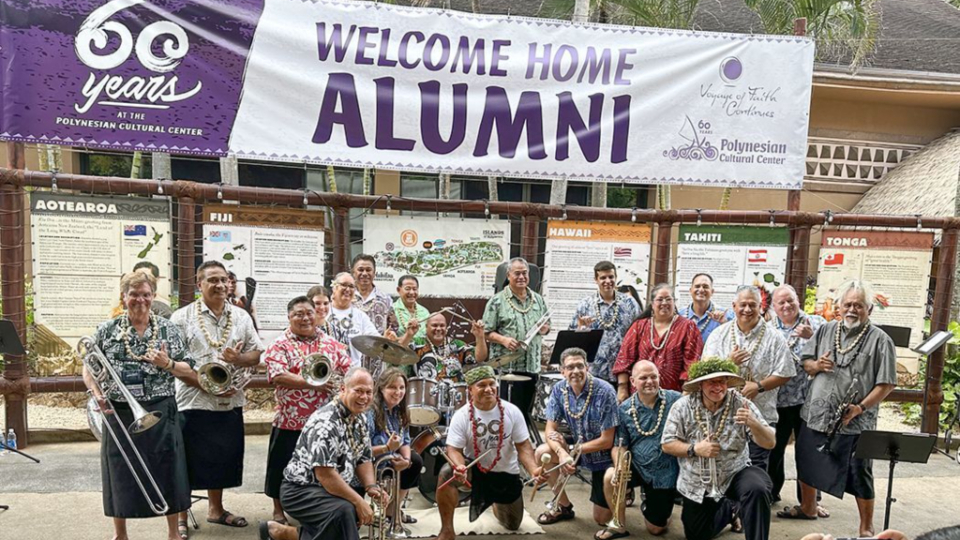
PCC-Anniversary
The BYU–Hawaii/Polynesian Cultural Center Brass Band performs its first reunion concert since 2013 at the Polynesian Cultural Center’s 60th anniversary celebration in front of the Gateway Restaurant on October 11, 2023. Photo by Mike Foley, courtesy of Church News.Copyright 2023 Deseret News Publishing Company.The Alumni Night Show
Most anniversary attendees looked forward to watching or performing in the alumni night show. Hundreds of the latter unlimbered and practiced for hours to return to the Pacific Theater stage to sing and dance once again with long-ago friends, in some cases sweethearts they eventually married, and even their children and grandchildren who share the PCC legacy. Indeed, some center “families” now include four generations.
Polynesian Cultural Center’s Hā
The “Breath of Life” night show normally runs about 90 minutes, but the alumni audience didn’t want to leave at the end of their show’s four hours.
It was overwhelming and touching. Some sections had more than 100 performers on stage, including kūpuna, or elders, who were courteously escorted and seated on stage to be with those still agile enough to perform. Some used canes, and one Tongan lady substituted tennis balls for the golf ball-sized seeds normally used in their “hiko” juggling number.
Theater manager David Tiave choreographed a special finalé and then, surprise, worked fireworks above the four-story volcano-like backdrop into the routine. In a word, the 2023 alumni show was unforgettable.
One 1963 Hawaiian alumna remarked she cried when she heard the overture to “her” first night show begin to play. A Tongan alumnus who came about a decade later said he saw some kūpuna dance using walkers. “That’s the spirit of the PCC,” he said afterward. “The PCC helped me be what I wanted to be.”
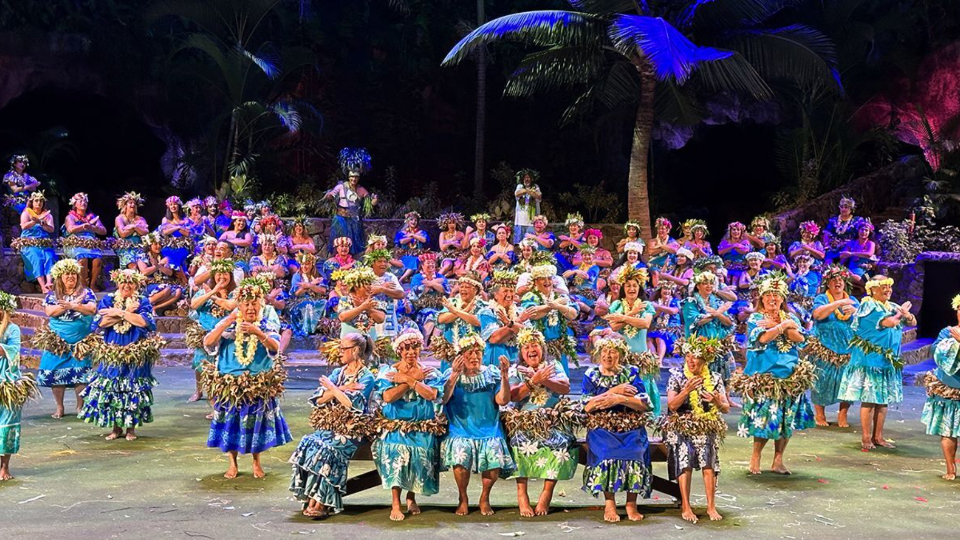
PCC-Anniversary
Senior alumni Tahitian dancers participate in the Polynesian Cultural Center’s 60th anniversary celebration, held October 7–12, 2023. Photo by Mike Foley, courtesy of Church News.Copyright 2023 Deseret News Publishing Company.Other Activities
Other PCC sixtieth anniversary activities included two pre-events: The “living treasures” banquet, and the Moanikeala Hula Festival in the Hawaiian Village. Monday morning started with historical lectures, time in the villages and departments. Following days featured an evening social in the villages, a “light” service project, and even a touch rugby game.
Nearing the end, BYUH/PCC brass band alumni overcame “sore lips” to put on a concert, the Gateway restaurant staged an impressive feast, and a “legacy walk” around the center’s perimeter featured “stations” honoring various alumni. There were also lots of opportunities to “talk-story” with old friends, and a “mic drop” session to share tender thoughts and testimonies.
The reunion ended with the current night show cast honoring all the alumni after their regular performance.
Copyright 2023 Deseret News Publishing Company.